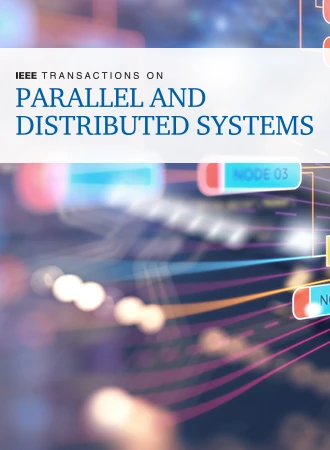DeepCAT+:用于大数据框架的低成本、可转移的在线配置自动调整方法
IF 5.6
2区 计算机科学
Q1 COMPUTER SCIENCE, THEORY & METHODS
IEEE Transactions on Parallel and Distributed Systems
Pub Date : 2024-09-12
DOI:10.1109/TPDS.2024.3459889
引用次数: 0
摘要
大数据框架通常会提供大量与性能相关的参数。与基于搜索和机器学习的方法相比,基于深度强化学习(DRL)的在线自动调整这些参数以获得更好的性能已显示出其优势。遗憾的是,基于 DRL 的传统方法在在线调整阶段的时间成本仍然很高,尤其是在大数据应用中。因此,我们在本文中提出了 DeepCAT$^+$,一种低成本、可移植的基于深度强化学习的方法,用于实现大数据框架的在线配置自动调整。为了降低总的在线调优成本并提高适应性,我们提出了以下几种方法:1)DeepCAT$^+$ 利用 TD3 算法而不是 DDPG 来减轻价值高估;2)DeepCAT$^+$ 通过一种新颖的奖励驱动优先级经验重放机制,修改了传统的经验重放,以充分利用稀有但有价值的转换;3)DeepCAT$^+$ 设计了双 Q 优化器(Twin-Q Optimizer),在不进行高成本配置评估的情况下估算每个动作的执行时间,并优化次优动作,以实现低成本的探索-开发权衡;4)此外,DeepCAT$^+$ 还实现了基于渐进式神经网络的在线持续学习模块,从历史调整经验中转移知识。基于实验室 Spark 集群和 HiBench 基准应用的实验结果表明,DeepCAT$^+$ 能够将最佳执行时间分别比基准平均加快 1.49 倍、1.63 倍和 1.65 倍,同时将总调整时间分别减少 50.08%、53.39% 和 70.79%。此外,DeepCAT$^+$ 还能很好地适应大数据框架的时变环境。本文章由计算机程序翻译,如有差异,请以英文原文为准。
DeepCAT+: A Low-Cost and Transferrable Online Configuration Auto-Tuning Approach for Big Data Frameworks
Big data frameworks usually provide a large number of performance-related parameters. Online auto-tuning these parameters based on deep reinforcement learning (DRL) to achieve a better performance has shown their advantages over search-based and machine learning-based approaches. Unfortunately, the time cost during the online tuning phase of conventional DRL-based methods is still heavy, especially for Big Data applications. Therefore, in this paper, we propose DeepCAT
$^+$ $^+$ $^+$ $^+$ $^+$ $^+$ $^+$
求助全文
通过发布文献求助,成功后即可免费获取论文全文。
去求助
来源期刊

IEEE Transactions on Parallel and Distributed Systems
工程技术-工程:电子与电气
CiteScore
11.00
自引率
9.40%
发文量
281
审稿时长
5.6 months
期刊介绍:
IEEE Transactions on Parallel and Distributed Systems (TPDS) is published monthly. It publishes a range of papers, comments on previously published papers, and survey articles that deal with the parallel and distributed systems research areas of current importance to our readers. Particular areas of interest include, but are not limited to:
a) Parallel and distributed algorithms, focusing on topics such as: models of computation; numerical, combinatorial, and data-intensive parallel algorithms, scalability of algorithms and data structures for parallel and distributed systems, communication and synchronization protocols, network algorithms, scheduling, and load balancing.
b) Applications of parallel and distributed computing, including computational and data-enabled science and engineering, big data applications, parallel crowd sourcing, large-scale social network analysis, management of big data, cloud and grid computing, scientific and biomedical applications, mobile computing, and cyber-physical systems.
c) Parallel and distributed architectures, including architectures for instruction-level and thread-level parallelism; design, analysis, implementation, fault resilience and performance measurements of multiple-processor systems; multicore processors, heterogeneous many-core systems; petascale and exascale systems designs; novel big data architectures; special purpose architectures, including graphics processors, signal processors, network processors, media accelerators, and other special purpose processors and accelerators; impact of technology on architecture; network and interconnect architectures; parallel I/O and storage systems; architecture of the memory hierarchy; power-efficient and green computing architectures; dependable architectures; and performance modeling and evaluation.
d) Parallel and distributed software, including parallel and multicore programming languages and compilers, runtime systems, operating systems, Internet computing and web services, resource management including green computing, middleware for grids, clouds, and data centers, libraries, performance modeling and evaluation, parallel programming paradigms, and programming environments and tools.
 求助内容:
求助内容: 应助结果提醒方式:
应助结果提醒方式:


